Lands Department
“If you take a step back and look around, you’ll see that everything is connected.”
- Halfway Elder
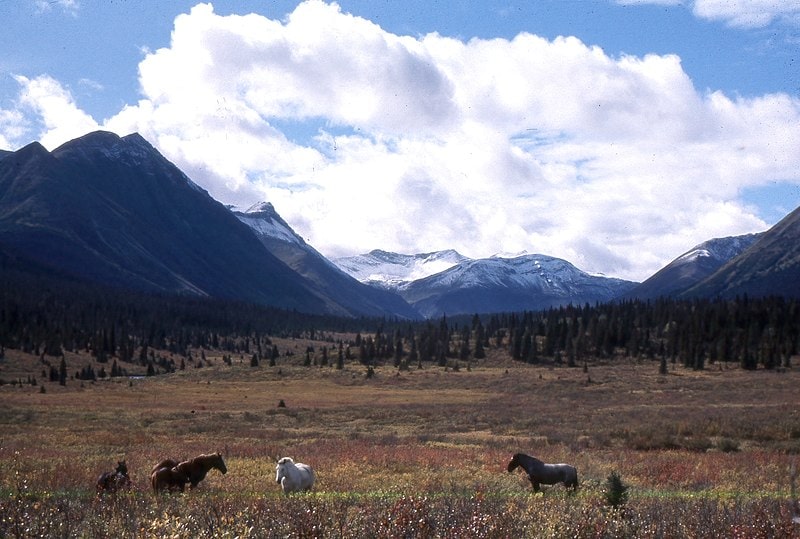
Wildlife Monitoring Programs

Wildlife Camera Monitoring Program in partnership with Pacific Canbriam
Pipelines often cross through creek and river systems. Associated riparian habitats are important for fish and many different wildlife species, including moose. This monitoring program helps inform decisions on how to conduct pipeline construction through this riparian habitat and across this creek.
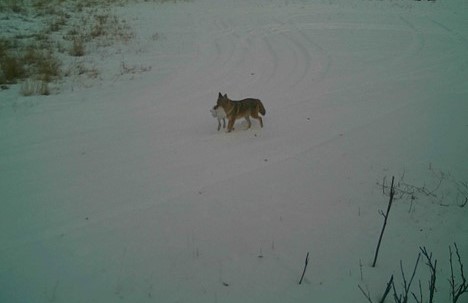
Wildlife Camera Monitoring Program in partnership with Petronas
When a wellsite has reached end-of-life, Petronas will reclaim the disturbed land. This monitoring program helps gather wildlife data to support restoration choices for the re-establishment of wildlife habitat.
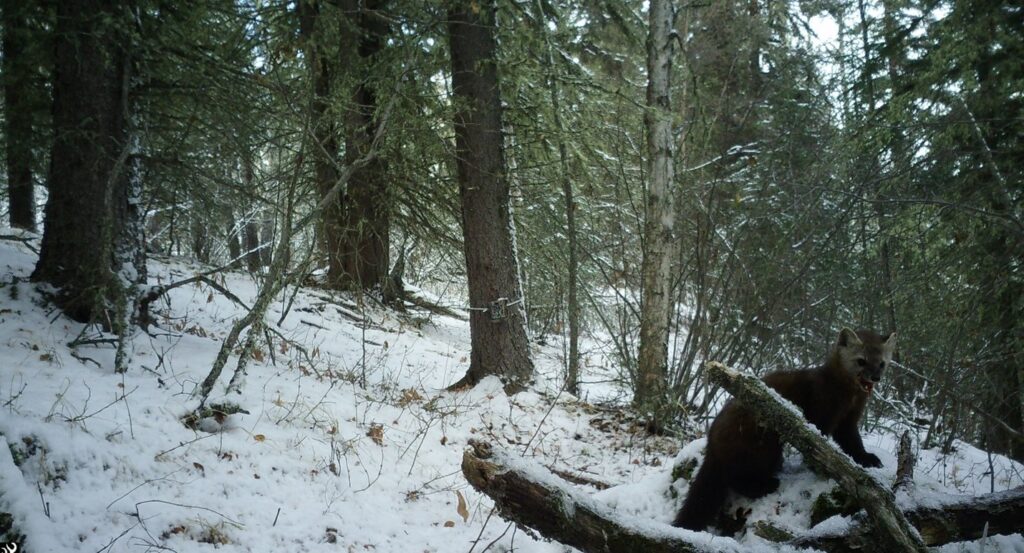
Wildlife Camera Monitoring Program to support protection of marten and fisher habitat
Mature forests along creek and river systems are productive, meaning that they produce the best trees for timber harvesting. These ecosystems are also rich in biodiversity, including marten and fisher. Wildlife cameras produce evidence of marten presence and the need to carefully manage these habitats.

Wildlife Camera Monitoring Program and Mineral Lick Study
This wildlife monitoring program and mineral lick study helps to showcase the importance of mineral licks for threatened wildlife species, such as caribou. In this case, camera data was used for evidence to promote the redesign a forestry cutblock to so that the logging would no longer encroach on this all-season mineral lick.
- Elder Katie Metecheah

Government and Industry Negotiations
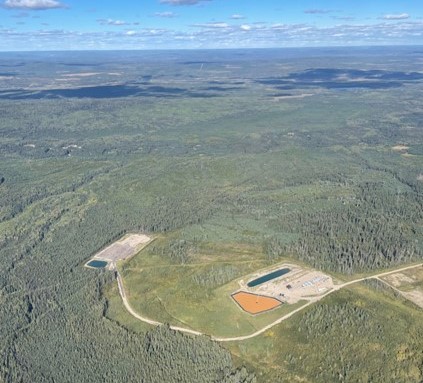
The Rocky Mountain foothills and the intersection of Dane Zaa lands with forestry and petroleum and natural gas development. The orange pond in the picture is known as “produced water” and may contain hydraulic fracturing chemicals and high saline content.

Government agencies make decisions on land activities that have potential to impact Halfway’s treaty rights. Industrial land activities include commercial logging, petroleum and natural gas development, mining, and cattle ranching. These activities have potential to place enormous pressure on Halfways’ treaty rights, which may also be defined as cultural practices and way of life.
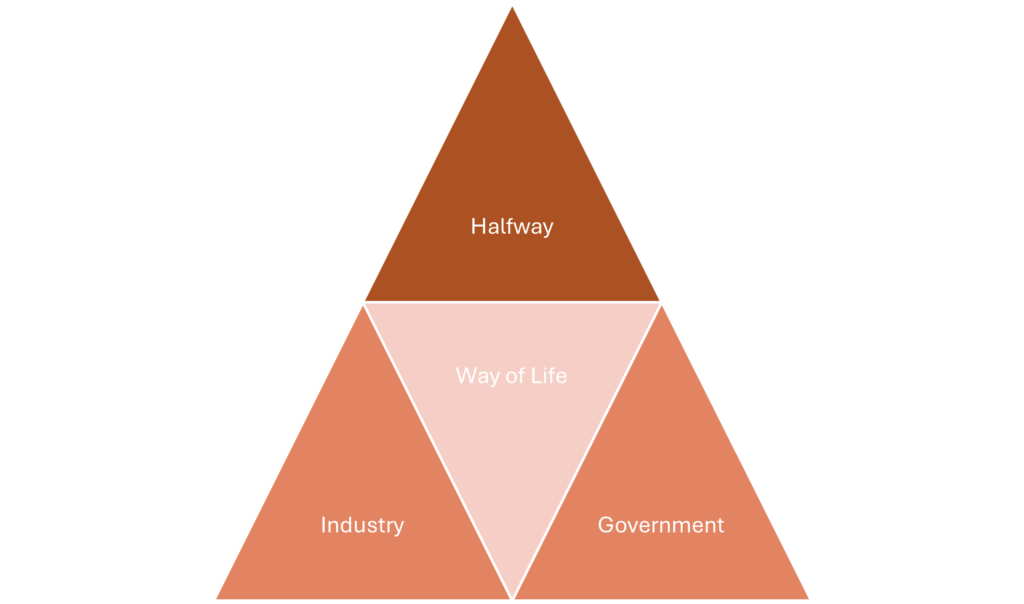
It’s the responsibility of the Lands Department to review industrial project proposals and highlight concerns. Industry has both regulatory requirements and voluntary choices on how to operate on the land. When companies choose to pre-engage with Halfway’s Land Department, they have an opportunity to hear about treaty right concerns and mitigate surface disturbances where possible.
The government has a duty to consult on potential impacts prior to making decisions. The Lands Department is responsible for engaging with the government in the consultation process. Through the consultation process, the Lands Department may raise concerns and government agencies may accommodate based on the concerns raised.
The triangle above represents the relationships between Halfway, the government, and industry. When everyone works together, it’s possible that Halfway’s way of life may be sustainable.
Today, the Dane Zaa people who make up the Halfway River First Nation are not well connected to their land and the ability to practice treaty rights has diminished since the signing of the treaty. The diminished ability to practice treaty rights has been recognized by BC’s Supreme Court (Yahey v. British Columbia, 2021 BCSC 1287). The court agreed that industrial cumulative effects authorized by the Province have had significant adverse impacts on Treaty 8 members’ way of life.
Projects
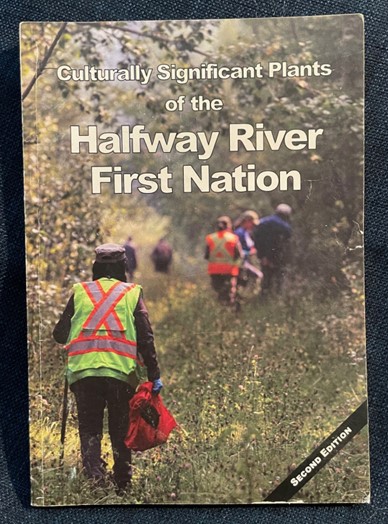
Culturally Significant Plants of the Halfway River First Nation
The books presents some of the common plants used by the Halfway River First Nation. It describes how to identify them, when to harvest, what parts to harvest, what parts to use, and how to prepare them. This book is provided to Halfway community members and distinguished guests. Guests may be distinguished for their positive contributions or their need to learn more; either way, it is always an honour to receive this book. The book is not for sale.
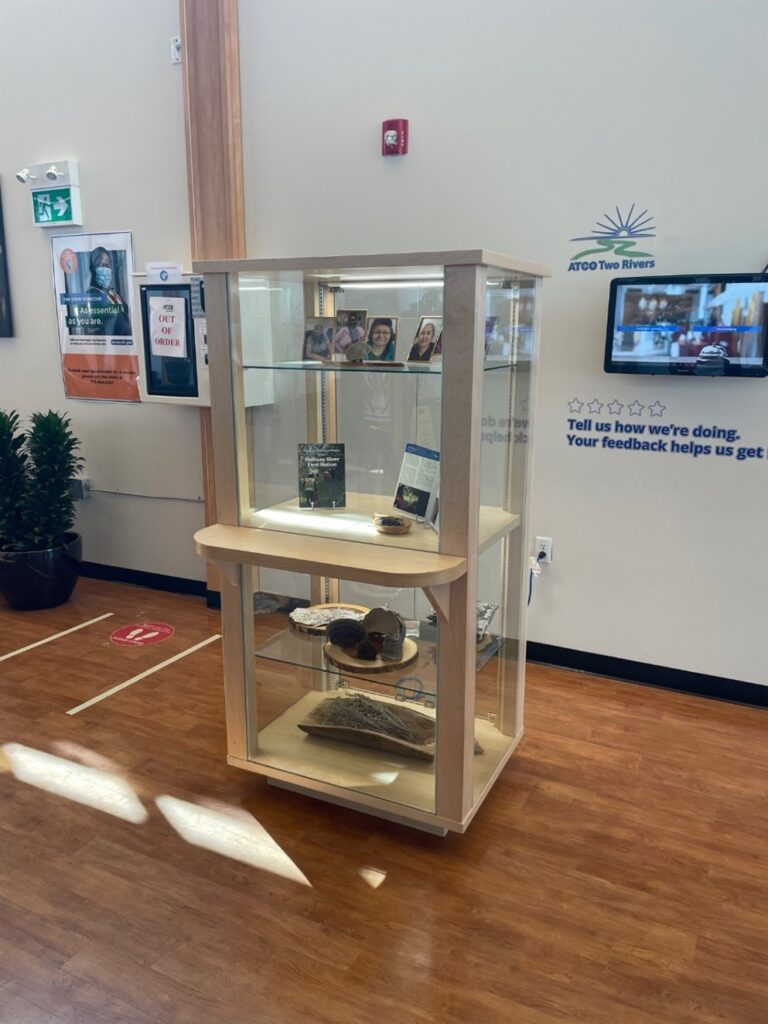
Plant Display Case at BC Hydro’s Site C Camp
BC Hydro is in the process of constructing the Site C dam, a major earthen dam on the Peace River that will supply power to support the production of liquified natural gas in northeast BC. The Lands Department worked with BC Hydro to construct a plant display case for the Site C Camp which showcases plant species used for medicines and showcases some of the elders who have passed down and continue to pass down this knowledge.
Agreements
If you have questions about Lands Department, Please contact , Lands Director at HRFN Band office.
Lands Director: Roslyn Notseta

